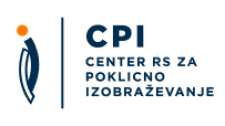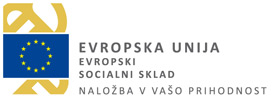Diplomirani inženir multimedije (UN)/diplomirana inženirka multimedije (UN)
Selected qualifications
| Name of qualification | Name of qualification: Diplomirani inženir multimedije (UN)/diplomirana inženirka multimedije (UN)Add to comparison |
|---|---|
| Translated title (no legal status) | Translated title: Bachelor of Science in multimedia engineering |
| Type of qualification | Type of qualification: Academic bachelor's degree |
| Category of qualification | Category of qualification: Educational Qualification |
| Type of education | Type of education: Academic bachelor's education |
| Duration |
Duration of education:
3 years
|
| Credits | Credits: 180 credits |
| Admission requirements |
Entry conditions:
Requirements for enrolment in the first year of the first-cycle university study programme Multimedia:
|
| ISCED field |
Field:
Information and Communication Technologies (ICTs)
|
| ISCED subfield | subfield: inter-disciplinary programmes and qualifications involving information and communication technologies (icts) |
| Qualification level |
SQF Level:
SQF 7 |
The qualification holder will be able to:
General competences:
- ability to define, understand and creatively solve problems in the broad field of multimedia,
- ability to think critically based on analysis and synthesis,
- system knowledge,
- ability to research and plan,
- professional, environmental and social responsibility,
- ability of active professional communication in written and oral form,
- ability to make optimal use of information and communication technology and its development,
- ability to independently follow the latest achievements and acquire new knowledge,
- ability to work in a team with experts from technical as well as non-technical fields.
Subject-specific competences:
- mastery of basic and professional knowledge in the field of telecommunications and information systems,
- ability to design and implement multimedia systems,
- understanding the nature of human-machine interaction,
- understanding the basics of information and communication technologies and the social role of information literacy
- knowledge of the basic laws of design and creation of multimedia content,
- knowledge of the operation of multimedia devices,
- ability to acquire knowledge and understand it from complementary technical fields and economics.
Examination performance is graded as follows: 10 (excellent); 9 (very good: above-average knowledge but with some mistakes); 8 (very good: solid results); 7 (good); 6 (adequate: knowledge satisfies minimum criteria); 5–1 (inadequate). In order to pass an examination, a candidate must achieve a grade between adequate (6) and excellent (10).
A student of the first level multimedia university study programme can progress to the second year if he / she completes all the obligations from the first year by the enrollment deadline, i.e. in the amount of 60 credit points (ECTS).
A student of the first level multimedia university study programme can progress to the third year if he / she completes all obligations from the first year (60 credits) and all obligations from the second year (60 credits or ECTS) by the enrollment deadline.
To enroll in the graduate internship, a student of the first level multimedia university study programme must complete all obligations from the first year (60 credit points), all obligations from the second year (60 credit points) and obligations from the third year in the amount of at least 54 credit points (ECTS).
Second-cycle master's study programmes (SQF level 8)
The student completes his / her studies after completing all the prescribed obligations of the study programme in the amount of 180 credit points, including the diploma thesis.
University of Ljubljana, The Faculty of Electrical Engineering, Faculty of Computer and Information Science
URL
Awarding body URL:Upcoming event
International Conference: 10 years of Slovenian Qualifications Framework
International Conference: 10 years of Slovenian Qualifications Framework Brdo Congress Centre, Predoslje 39, 4000...
© Center RS za poklicno izobraževanje, 2018. All rights reserved
Sitemap General legal notice Cookie Policy Production: ENKI






